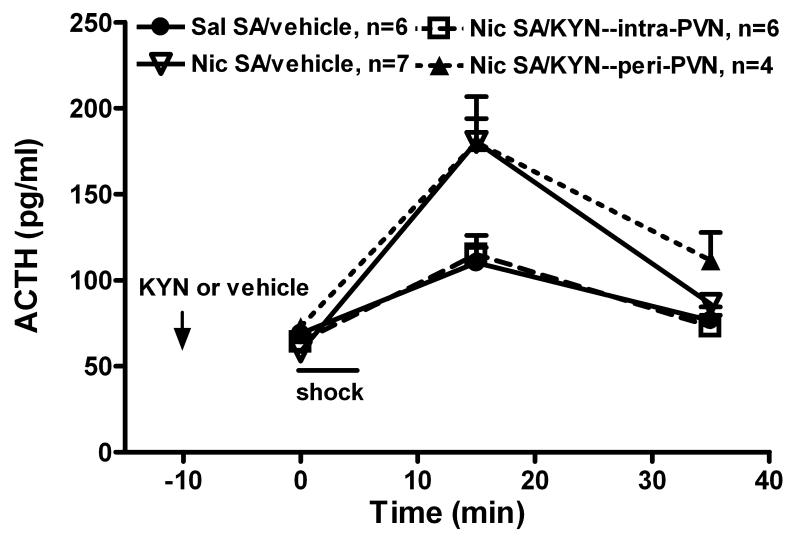Fig. 5.
The effects of intra- and peri-PVN kynurenic acid (KYN) on ACTH responses to mild footshock stress during chronic nicotine (Nic) or saline (Sal) self-administration (SA). Based on studies showing that kynurenic acid alone had no effect on corticosterone levels (Table 1), kynurenic acid (1.5 nmol/side) or vehicle was bilaterally microinjected into PVN 10 min prior to the first blood sample, and then rats received footshock. ACTH measurements were obtained on a subset of the same animals shown in Fig. 4A. Footshock increased plasma ACTH levels (factorial ANOVA: time, p < 0.001) to a greater degree in rats self-administering nicotine (SA group, p < 0.05; time × SA group, p < 0.01), and this was attenuated by kynurenic acid (PVN treatment, p < 0.05; time × PVN treatment, p < 0.05). In fact, intra-PVN kynurenic acid completely blocked the enhanced ACTH response (two-way ANOVA: Nic SA/vehicle vs. Nic SA/KYN--intra-PVN, p < 0.05). In contrast, peri-PVN kynurenic acid was ineffective (p > 0.05).

